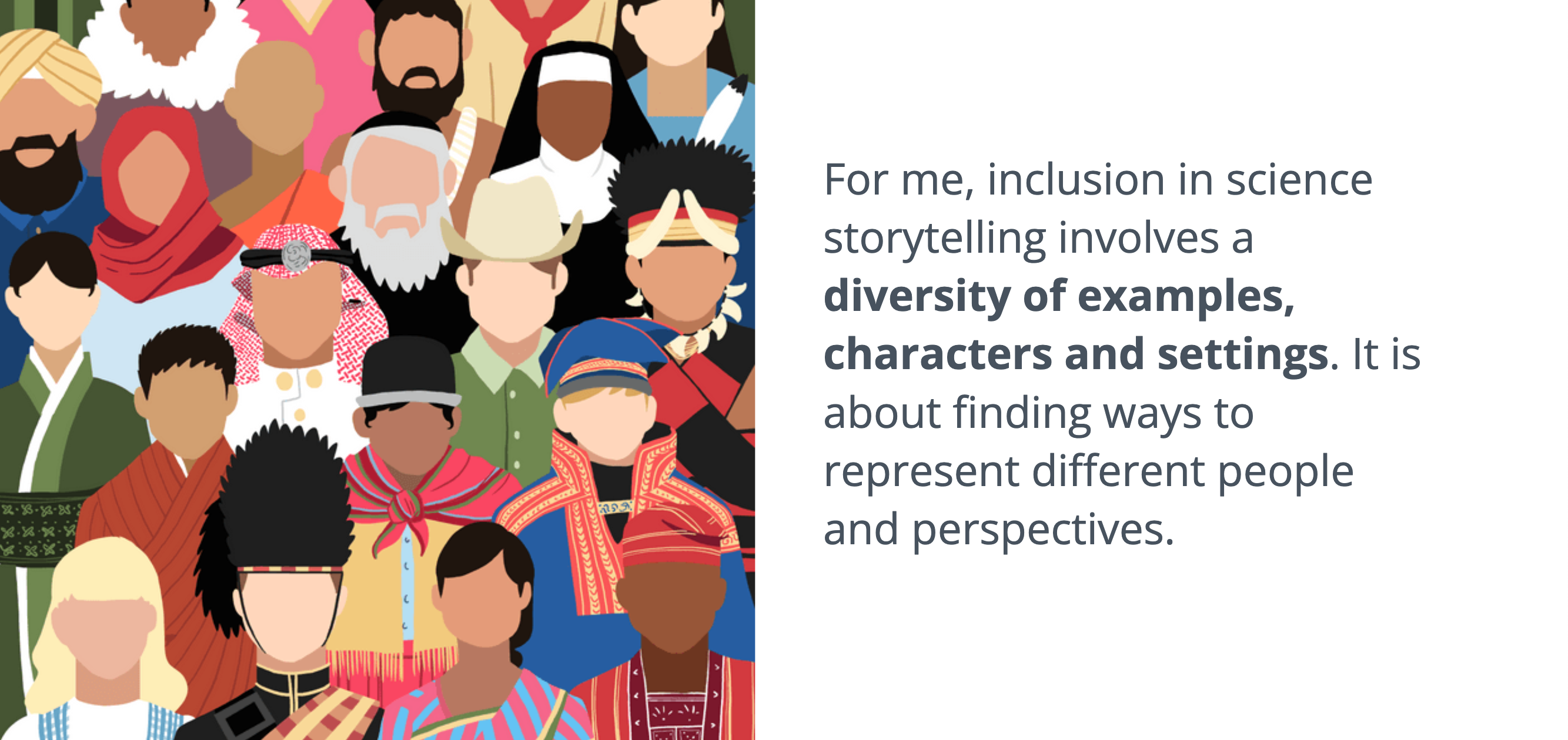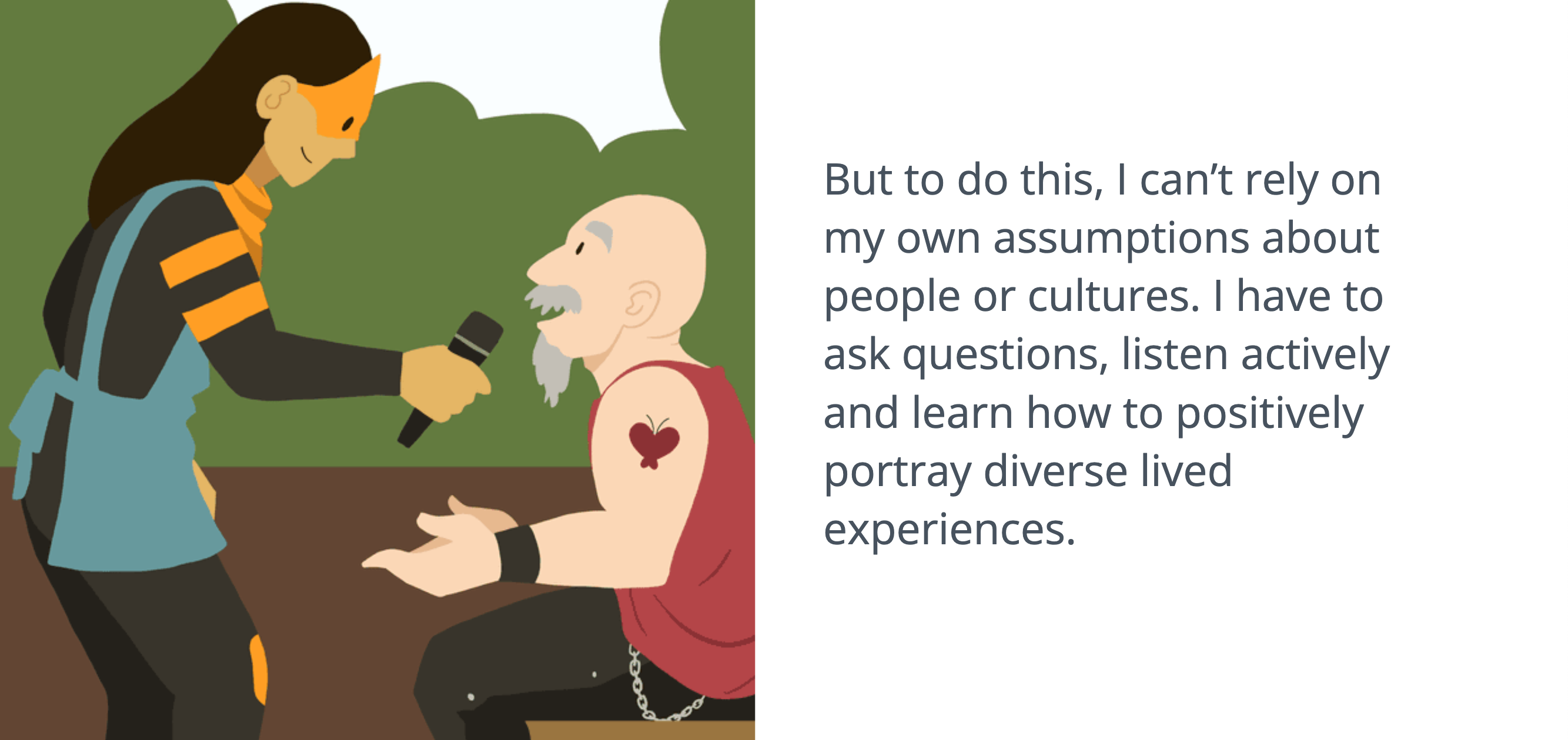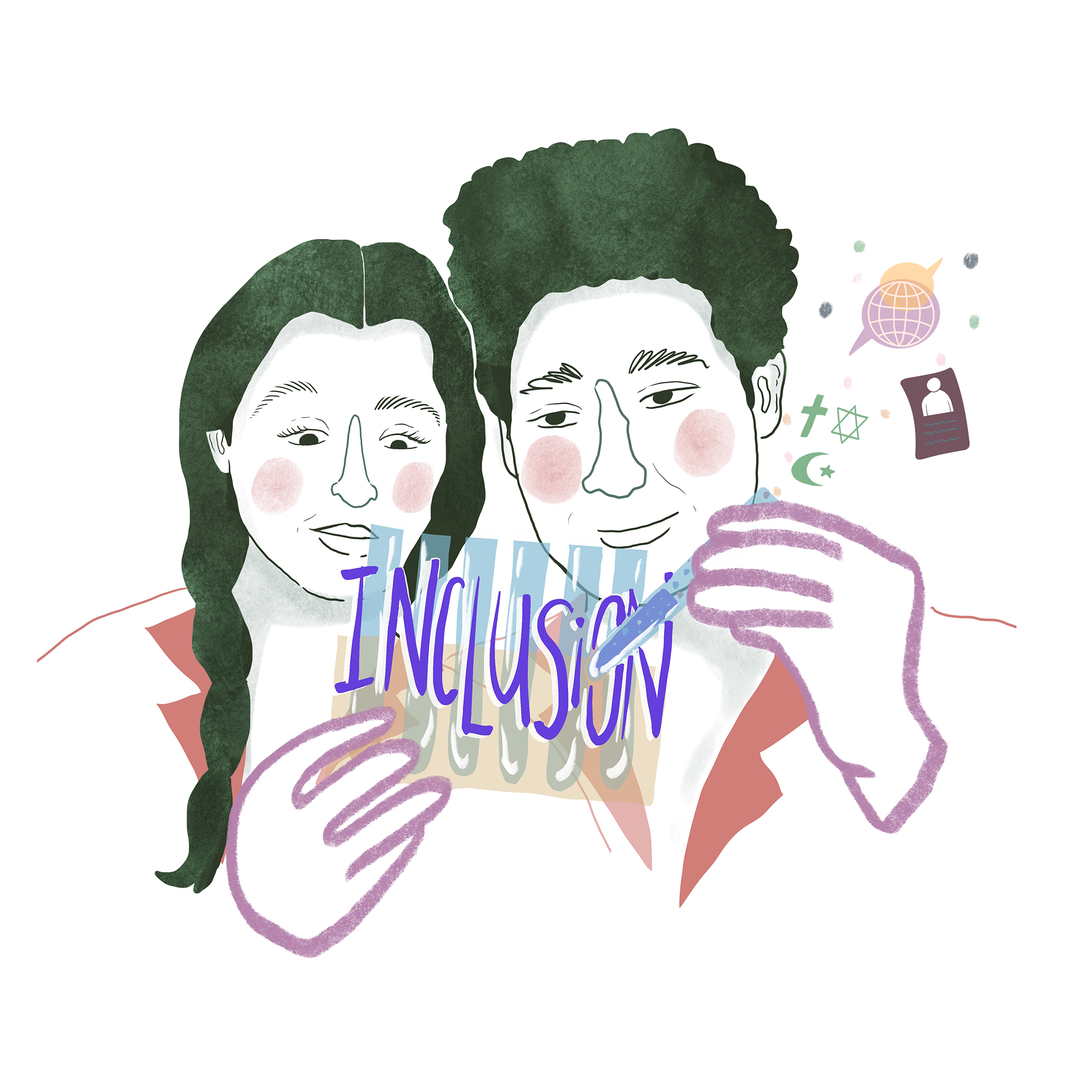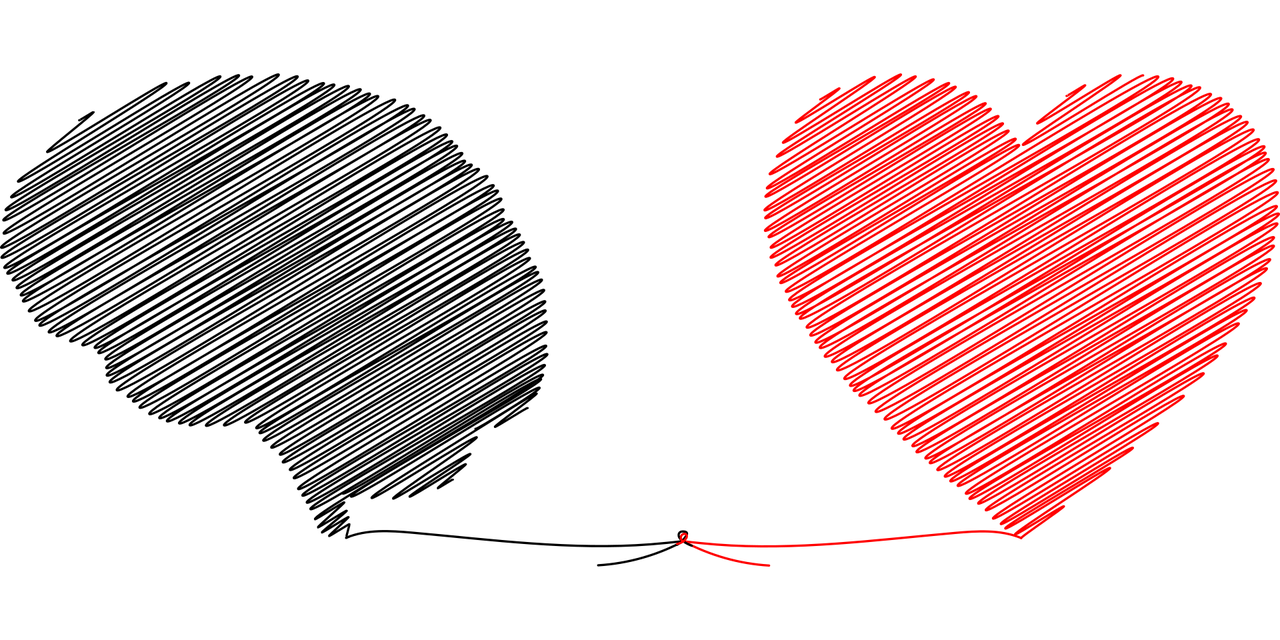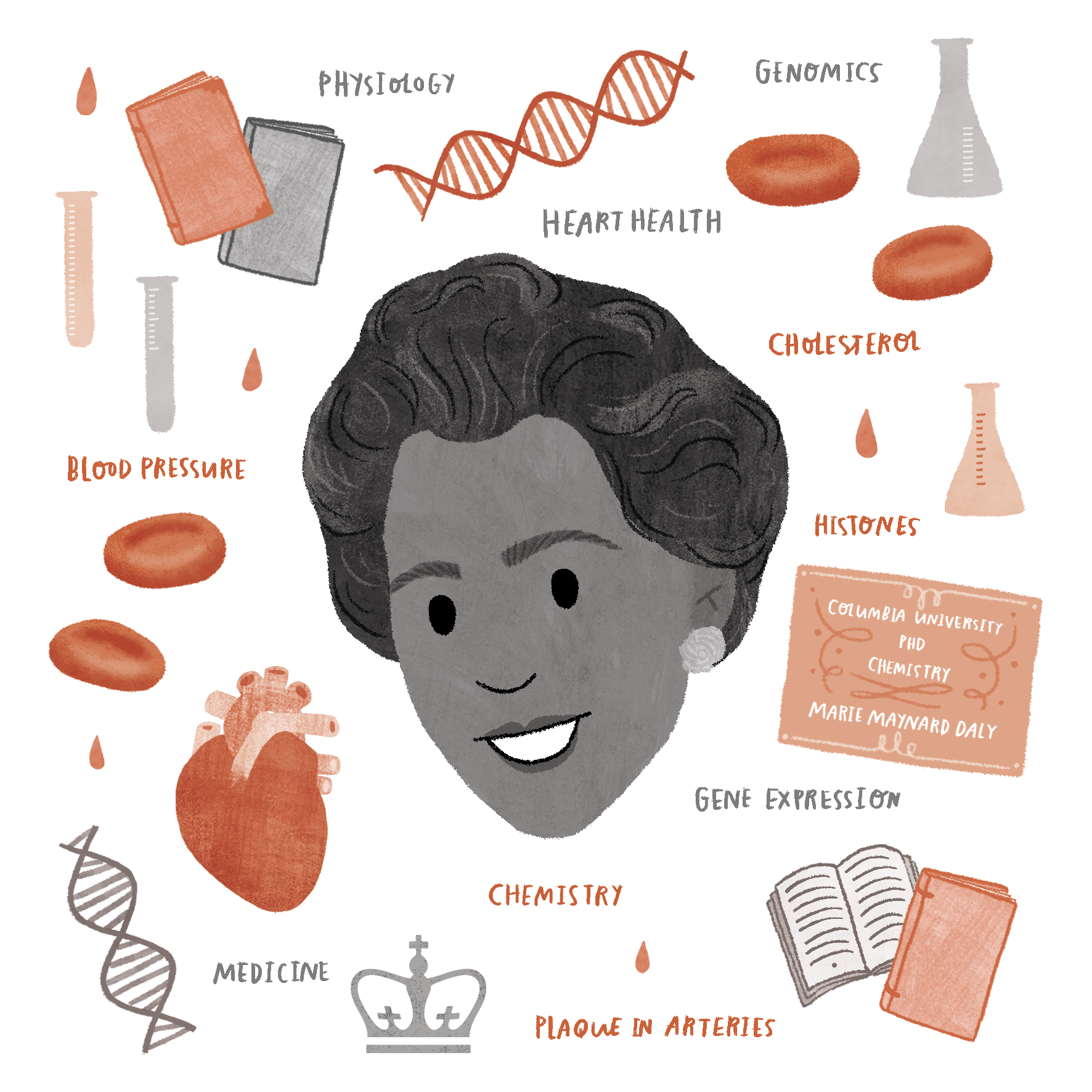The Lifeology SciComm Program has a new course to help scientists and other experts learn about inclusive storytelling in science! Learn what it means to be inclusive and strategies for doing so when constructing a science story.
Screenshot of a card from the “How to Be Inclusive in Science Storytelling” course.
The creators of this course are Manasi Apte, Ph.D. and Abrian Curington. Manasi is a science communicator and educator. Abrian is an illustrator and cartographer. Both creators have worked on other Lifeology courses. Sunshine Menezes, the executive director of the Metcalf Institute at the University of Rhode Island, also reviewed the current course.
Screenshot of a card from the “How to Be Inclusive in Science Storytelling” course.
About the Course
“How to Be Inclusive in Science Storytelling” follows HighLight, a superhero character who was featured in another course by Manasi and Abrian: “How to Tell a Science Story.” In the inclusive storytelling course, HighLight volunteers at a botanical garden as an exhibit guide. She loves that she gets to work with a variety of people in this position.
By focusing on the different experiences that each person hopes to have at the gardens, HighLight is inclusive in her storytelling. Specifically, HighLight is sure to include a diversity of examples, characters and settings to be sure she is representing a variety of people and their perspectives.
Additionally, we also learn that giving a voice to marginalized identities is an important aspect of inclusive storytelling. To do so, we should work with people to create stories. Learn more about what it means to be intentional, reciprocal and reflexive when constructing a science story. Hint: it’s all about thinking about the audience first and adapting. Leave your personal agenda at the door.
“It was nice to collaborate on another project where we got to see our superheroine using the power of communication. It’s always especially satisfying to have a visual narrative where she doesn’t always get things right but is able to learn from her mistakes, and learn from others to become a more effective communicator.” – Abrian Curington
When viewing this course, it is important to know that inclusion comes in different forms. In the course, HighLight talks about the inclusion of perspectives, for impact, and by access. Showcasing diverse ideas and interpretations of science is imperative. Balancing your reasons for sharing a story and your audience’s reasons for wanting to hear a story is important for impact. Lastly, your audience needs access to the story—think about barriers to entry or how to include people with physical, mental, cognitive, learning, or sensory disabilities.
But learn more in the course! There are even examples of how you can adapt your communication efforts to be more inclusive in these different forms.
Screenshot of a card from the “How to Be Inclusive in Science Storytelling” course.
And remember, inclusion isn’t a solo enterprise. You should seek the support of and collaboration with others. I won’t give all the tips and tricks away. You’ll have to view the course for yourself. Launch the course now!
Want to check out more SciComm courses? Head on over to this page now to view the 16 and counting other SciComm courses we offer.
